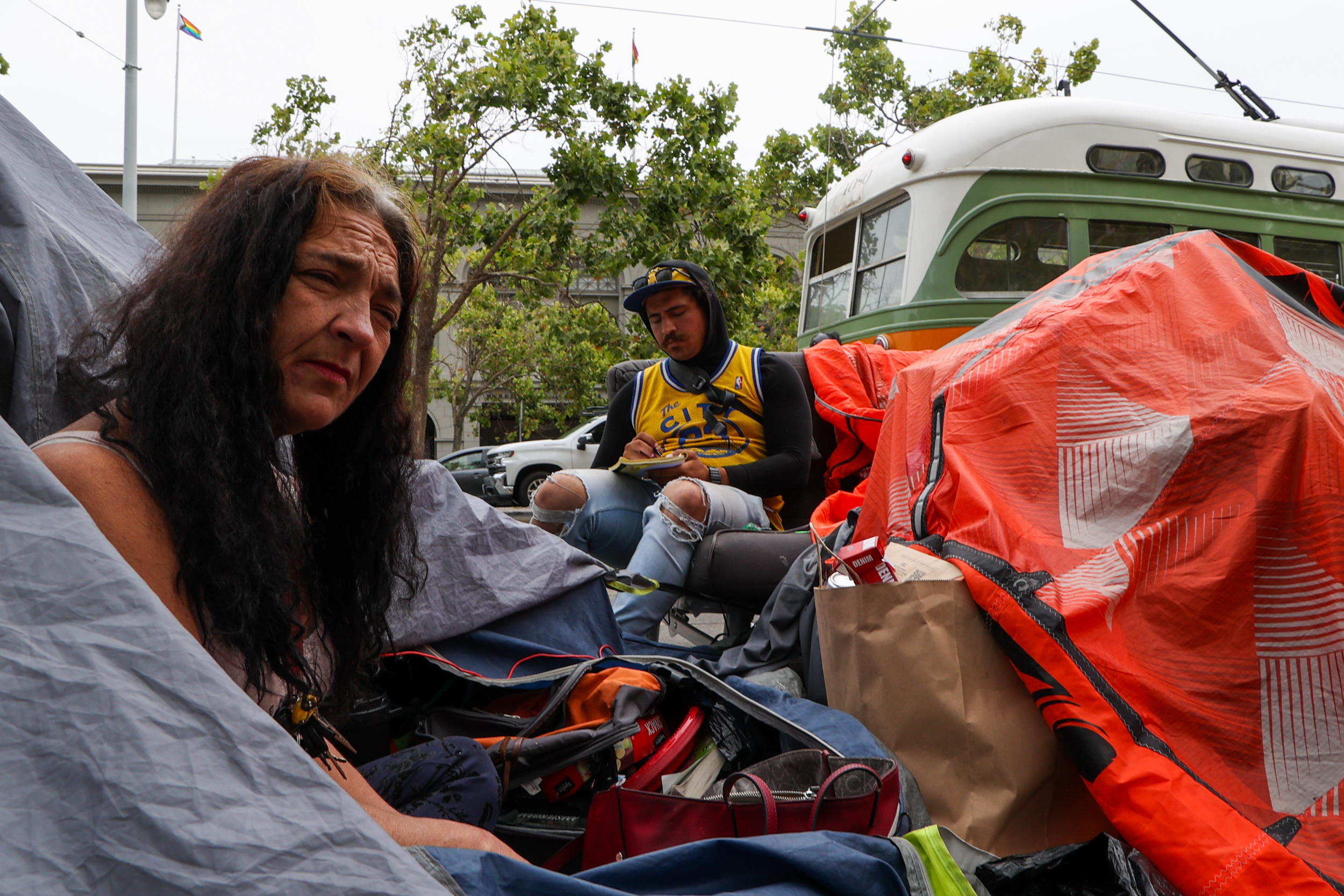We received more than 100 questions from readers about homelessness in San Francisco. One reader wanted to know about the underlying causes of homelessness.
When we see people living in tents on the streets or curled up in doorways, many of us wonder how they ended up there. Did they get fired? Are they addicted to alcohol or drugs? It’s not surprising that some people believe the fundamental causes of homelessness are drug addiction and mental illness because many of those we see on the streets seem to have such issues.
Some 20,000 individuals in San Francisco experienced homelessness at some point in 2022, according to the city’s most recent “point in time” count. More than one-fifth of those surveyed said job loss was the primary reason they were unhoused, while another 14% blamed eviction and 12% blamed drugs or alcohol.
Other primary reasons people cited for becoming homeless were: “an argument with family or friend who asked you to leave,” (9%), mental health problems (7%) and incarceration/parole/probation issues (7%).
People’s circumstances tend to spiral once they lose their homes, according to the report's authors. “An inability to secure adequate housing can lead to an inability to address other basic needs, such as health care and adequate nutrition,” the report said.
To be sure, housing in San Francisco is expensive, and there’s not enough of it. The city remains one of the least affordable places to live in the country. Despite all the news of doom loops, companies fleeing Downtown and the city’s population shrinking, the median monthly rent for a one-bedroom apartment is more than $3,000, about double the national average.
| The Standard is answering reader questions about homelessness in San Francisco through our Ask The Standard project. Have something you want to know? Submit a question here. |
In their book Homelessness Is a Housing Problem, University of Washington researcher Gregg Colburn and data scientist Clayton Page Aldern say “the homelessness crisis in coastal cities cannot be explained by disproportionate levels of drug use, mental illness, or poverty.”
Rather, the biggest factors driving homelessness in American cities are rents and vacancy rates. They note that cities with high poverty rates but relatively affordable housing, such as Detroit and Miami, have relatively low rates of homelessness, while Los Angeles, Seattle and San Francisco—with low poverty rates and pricey housing markets—have relatively high homelessness rates.
That’s not to say that mental illness and heavy substance use don’t play a role. Experts like to use the analogy of the children’s game of musical chairs to explain what causes homelessness. The kid who has a broken foot is most likely to be without a chair early in the game, while the winner is the kid who is strongest and fastest.
A few years ago, a team of economists at Zillow found that when cities where rents reach a point where residents have to spend more than a third of their income on housing, homelessness skyrockets. Well-off residents start renting places that middle-income folks used to rent, while middle-income folks rent those that low-income people used to rent, while people below the poverty line are forced to scramble. And those with substance use or mental health issues are often least likely to end up with a place to live.
